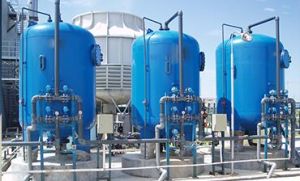
water softner systems
The Activated carbon Filters are designed to remove free chlorine, organic matter, odour and Colour present in the raw water and waste water. Due to its high degree of micro porosity, activated carbons provide a huge surface area.Activated carbon filter operates through adsorption. Adsorption is directly related to the surface area of the media. This great surface area furnishes a huge adsorption area for organic as well as chlorine molecules to attach themselves.
...more
Water Filtration Media
The sand must pass through a 12mm (1/2”) sieve. Anything larger than this can be discarded. Store the material that is captured by the 6mm (1/4”) sieve. This is used for the drainage gravel layer at the bottom of the filter. Store the material that is captured by the 1mm (0.04”) sieve. This will be used for the separating gravel layer just on top of the drainage gravel layer. Store the material that is captured by the 0.7mm (0.03”) sieve. Part of this material will be used to make the concrete filter box (if constructing a concrete filter). The rest will be further sifted to make the sand filter media.
...more
Ultrafiltration Plants
Ultrafiltration is applied in cross-flow or dead-end mode and separation in ultrafiltration undergoes concentration polarisation. Ultrafiltration systems eliminate the need for clarifiers and multimedia filters for waste streams to meet critical discharge criteria or to be further processed by wastewater recovery systems for water recovery. Efficient ultrafiltration systems utilise membranes which can be submerged, back-flushable, air scoured or spiral wound UF/MF membranes that offer superior performance for the clarification of wastewater and process water. Tristar offers a range of industrial scale water filtration technologies depending on the chemical and physical components of the water supply to be treated.
...more
Electrical Panels
The distribution of power to the various circuits are protected from over-current by the use of circuit breakers or fuses. Once you open the door to the panel you can access all the circuit breakers or fuses. Usually one of these panels feeds all the circuits in the home but there may be a situation where there is another "sub-panel" serving a dedicated area like a new kitchen
...more
DM Plant
Demineralization is the process of removing mineral from the water . De minerialized Water is also known as Deionized Water, Water that has had its mineral ions removed. Mineral ions such as cations of sodium, calcium, iron, copper, etc and anions such as chloride, sulphate, nitrate, etc are common ions present in Water. Ion Exchange Resins There are two basic types of resin - cation-exchange and anion-exchange resins. Cation exchange resins will release Hydrogen (H+) ions or other positively charged ions in exchange for impurity cations present in the Water. Anion exchange resins will release hydroxyl (OH-) ions or other negatively charged ions in exchange for impurity anions present in the Water. The application of ion-exchange to Water treatment and purification. There are three ways in which ion-exchange technology can be used in Water treatment and purification: first, cation-exchange resins alone can be employed to soften Water by base exchange; secondly, anion-exchange resins alone can be used for organic scavenging or nitrate removal; and thirdly, combinations of cation-exchange and anion-exchange resins can be used to remove virtually all the ionic impurities present in the feed Water, a process known as deionization. Water deionizers purification process results in Water of exceptionally high quality
...moreBe first to Rate
Rate ThisOpening Hours